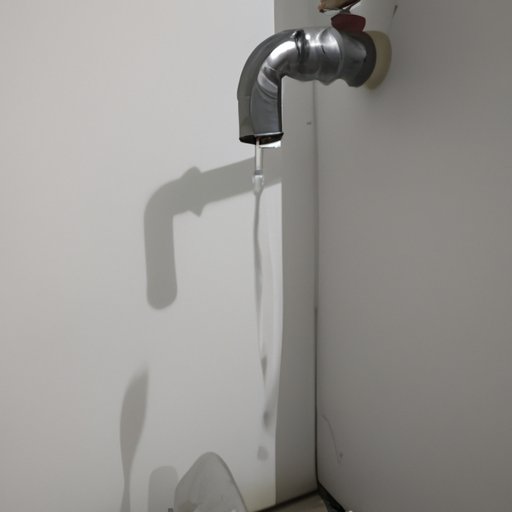Introduction
Do you ever find yourself questioning a sudden increase in your water bill? Have you noticed any mysterious water stains on your walls or ceiling? These are signs that you may be dealing with a slow water leak. It’s important to take care of leaks as soon as possible, or they can cause significant damage to your home and your wallet. In this article, we’ll explore some simple ways to tell if your water is leaking slowly, and what to do if you find a leak.
Monitoring Your Water Bill
The first step to identifying a slow water leak is to monitor your water bill closely. Keep an eye out for any sudden increases in usage, as this could indicate a leak. One of the best ways to do this is to compare your usage to the same timeframe from a previous year. If you notice a significant increase that can’t be accounted for, it’s time to investigate further.
Checking Your Water Meter
Another useful tool is your water meter. Most homes have a water meter located just outside of the house, near the street. To check your meter, turn off all water sources inside and outside of your home, and record the reading on the meter. Wait at least two hours, and then check the meter again. If the reading has changed, then you may have a leak in your home.
Inspecting Faucets and Toilets
Even small drips and leaks from faucets and toilets can add up over time and waste a significant amount of water. To locate and fix a leaking faucet, turn off the water supply line and remove the faucet handle. Replace any worn or damaged parts, such as a washer or O-ring. To inspect your toilet, place a few drops of food coloring in the tank. If the color appears in the bowl within 10-15 minutes, there may be a leak in the flapper or valve.
Examining Walls and Ceilings
Water stains, mold growth, and soft spots in walls or ceilings could be signs of a slow water leak. Look for these signs near areas with pipes or fixtures, as well as in the attic or crawl space. If you find any of these signs, take action immediately to prevent further damage.
Listening for Sounds
Listening for the sound of running water in your home is another helpful way to identify a slow leak. Sounds such as a running toilet or dripping faucet can be easily fixed to conserve water and save you money. Other sounds that may indicate a leak include hissing, banging or gurgling sounds in your pipes. If you hear any unusual sounds, it’s important to take the next steps to avoid a costly repair.
Conducting a Dye Test
A dye test is an easy way to identify leaks in your toilet. Simply add a few drops of dye to the tank, and wait for at least 15 minutes. If the water in the bowl changes color, there may be a leak in the flapper valve. This is an easy fix that can be done quickly and inexpensively.
Conclusion
Slow water leaks can cost you significant time and money if not addressed promptly. By monitoring your water bill, checking your water meter, inspecting faucets and toilets, examining walls and ceilings, listening for sounds, and conducting dye tests, you can identify leaks and take action quickly. Remember, even the smallest leaks can lead to bigger problems over time. So, take care of those leaks as soon as you spot them and save yourself a lot of trouble in the long run.
